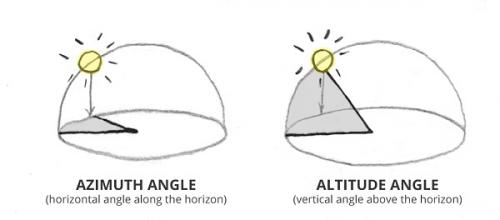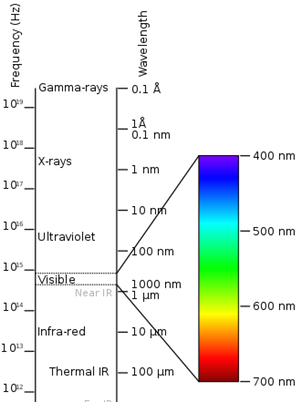Why is the sky blue?
It is difficult to "quantify" the degree of "blue" in the sky. Indeed, the colour of the sky involves multiple factors, such as:
- the inclination of the Sun with respect to the vertical
- the place where we are (taking into account the amount of pollution, but also simply the altitude, which determines the amount of air above us)
- the chemical composition of the atmosphere (on Mars the sky is a different colour because there is much less atmosphere and a lot of dust)
- and the meteorological conditions (For example: Are we in the presence of a temperature inversion that causes the air masses to stagnate? Or are we facing a lot of wind that would disperse pollutants?)
Dominant phenomenon that determines the blue colour of the sky
The atmosphere as a color filter
First of all, it is important to realize that the light coming from the Sun contains all the colours of the rainbow (otherwise we would never see a rainbow). However, the atmosphere filters and diffuses - more or less - these different colours before they reach our eyes. The reason why we perceive a blue sky is that the atmospheric molecules mainly diffuse the light waves that are "on the blue side" of the rainbow (of the electromagnetic spectrum).
Colors in the sky in scientific terms
The scattering:
- is greatest at shorter wavelengths
- increases when we look at the colours of the rainbow, going from purple to red.
When the Sun is high on the horizon, this blue light is scattered in all directions, giving the sky its blue color wherever we look.
This phenomenon, called "Rayleigh scattering", is the dominant phenomenon that determines the blue color of the sky. (On Mars this scattering is minimal because of the very thin atmosphere, and the sky is yellow-brown.)
Setting or rising sun in orange-red colours
Other colors in the atmosphere
Of course, the other colours propagate as well, are diffused more or less efficiently, and also reach our eyes.
The longer the path travelled by light (optical path length), the more these colors are present and dull the blue tone of the sky, which explains why the sky seems shallower when we move our gaze away from the vertical (right above our heads) to look towards the horizon.
If the air is very humid, the large number of mini-droplets of water makes it look even milkier. And if pollution gets in the way, it can further enhance the absorption of certain colours, and the colour of the sky can take on yellowish or reddish tones.
This is the case, for example, with:
It is for this very reason that the sky of the setting or rising sun takes on beautiful orange-red colours.
Our atmosphere as a peel around its orange
Let's imagine the atmosphere around the Earth as a peel around its orange and we observe it as a tiny dot just below the peel.
Since the Sun is low on the horizon, the light reaching our eye has travelled a much longer distance through the peel-layer than when the Sun is high in the sky: the blue has dispersed as the light travels further, and we are left with the colours closer to red.





